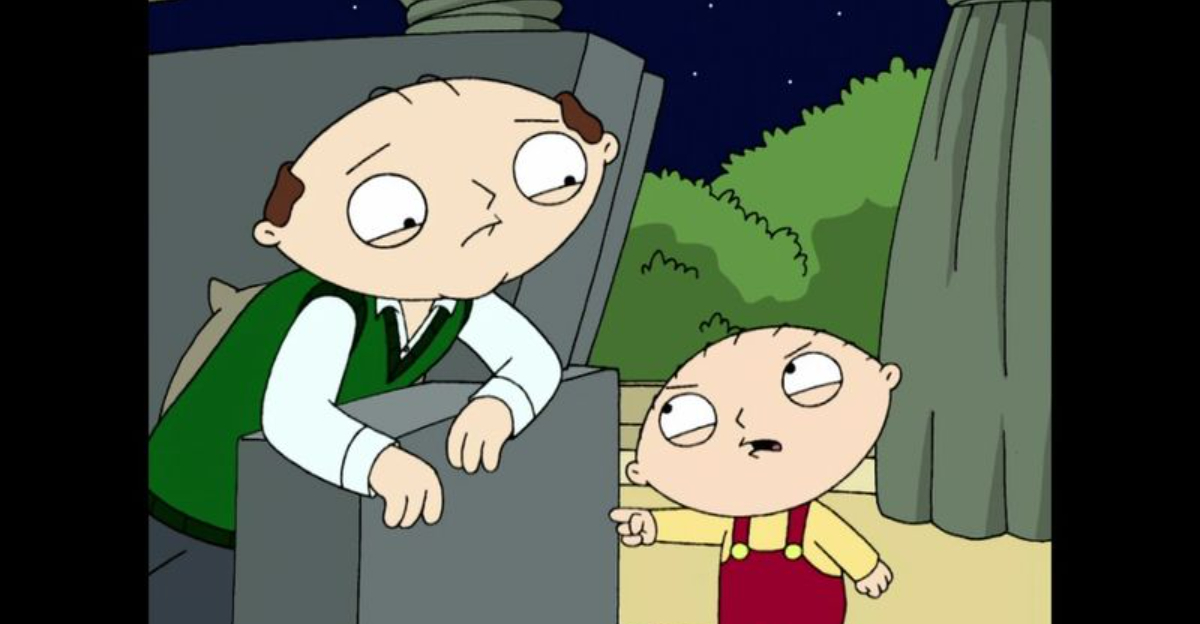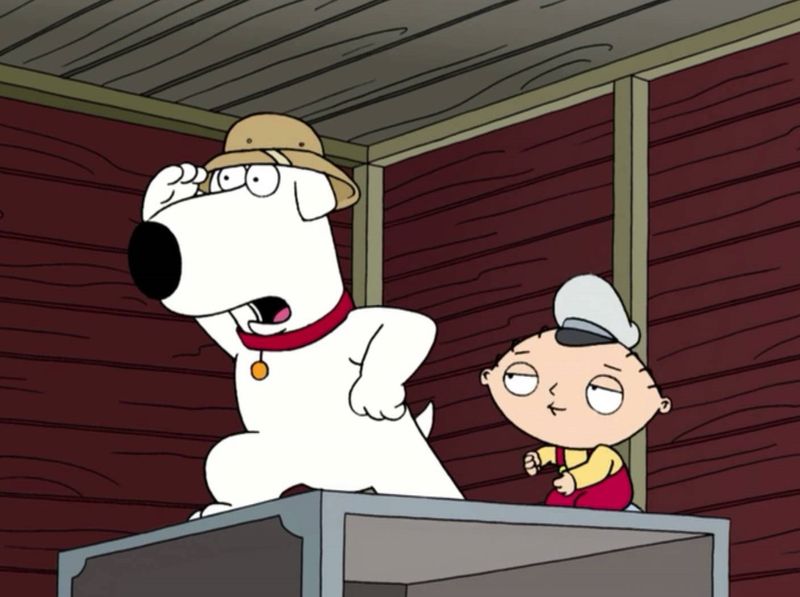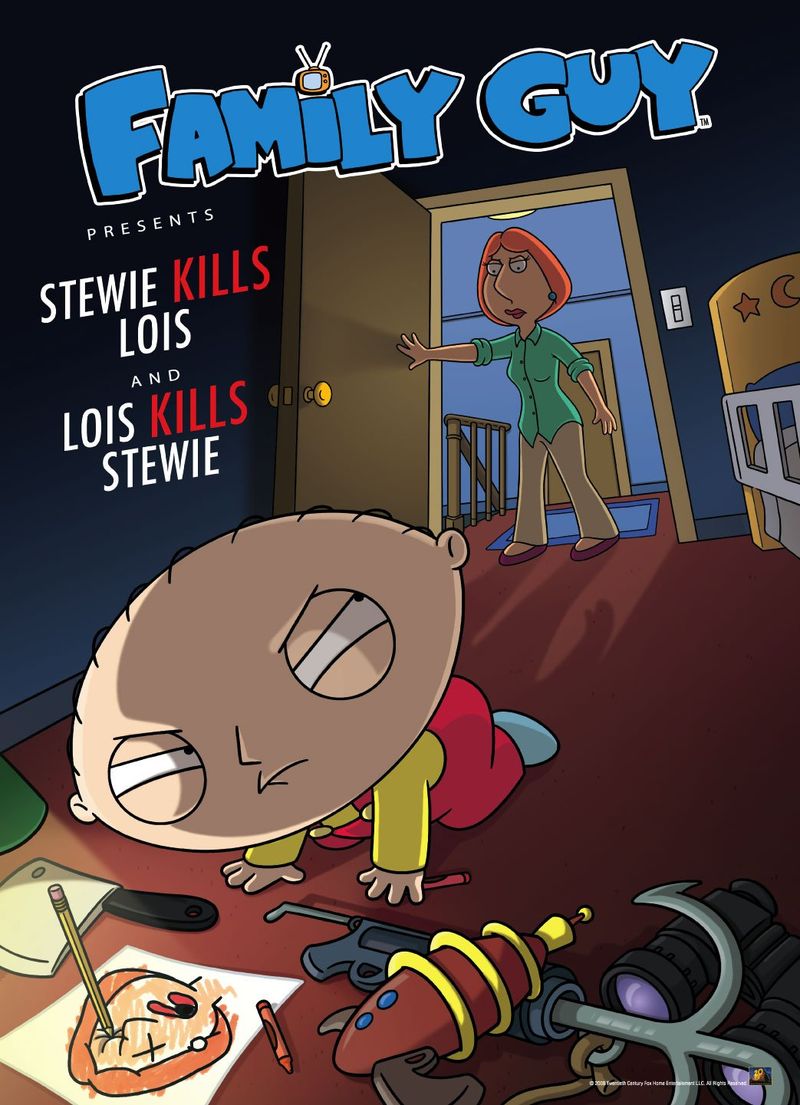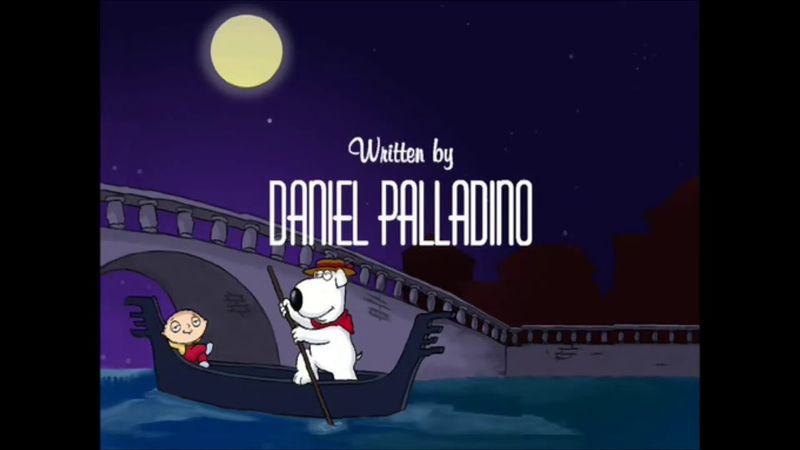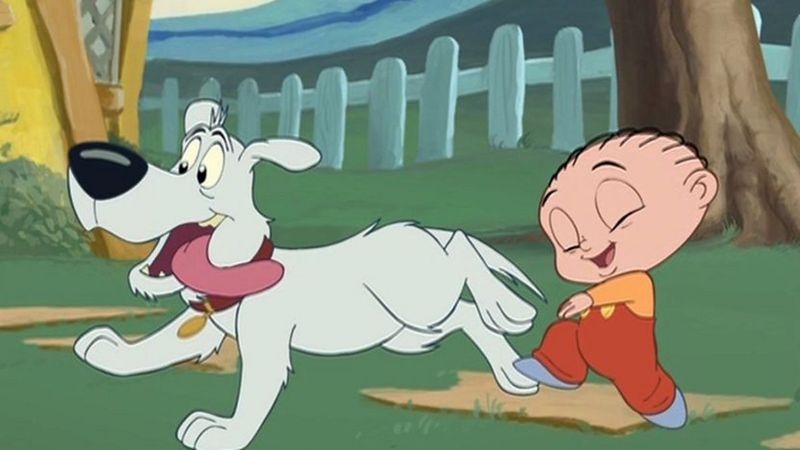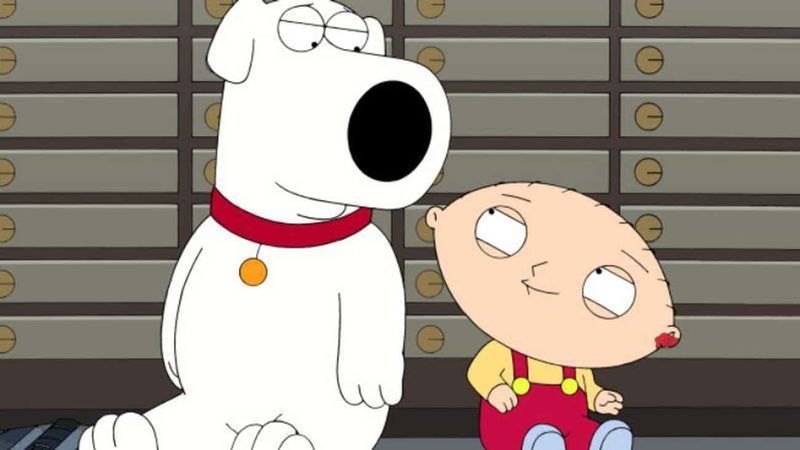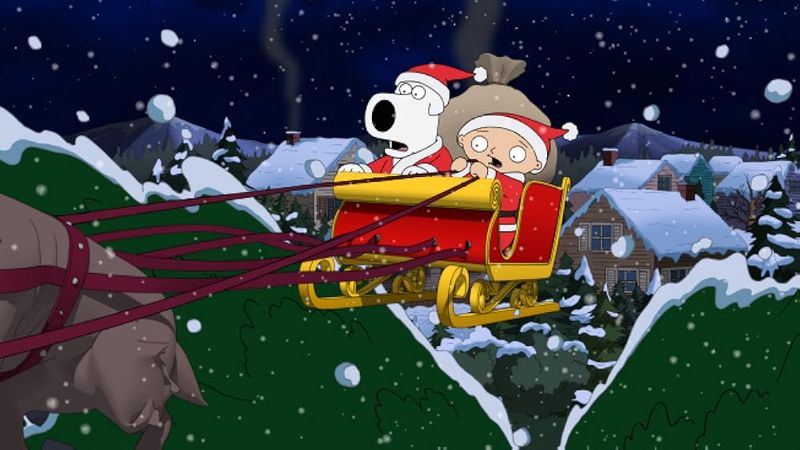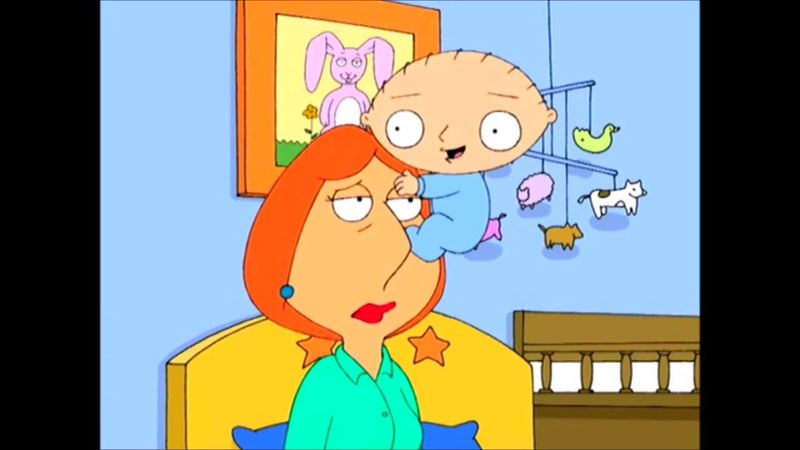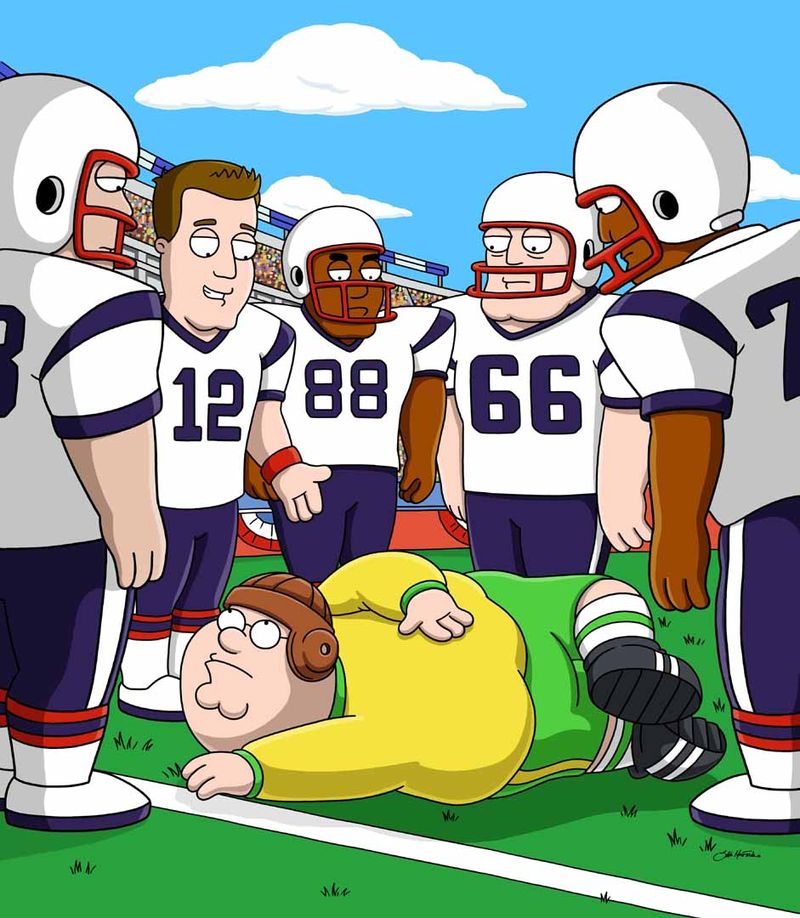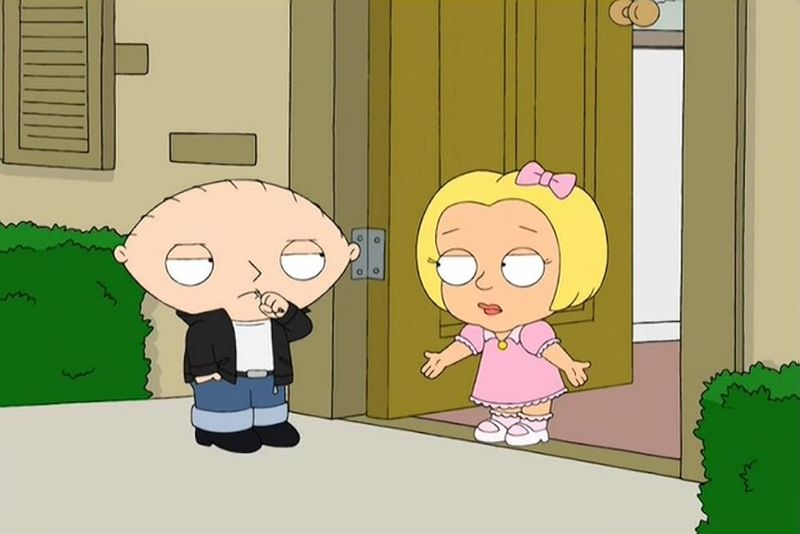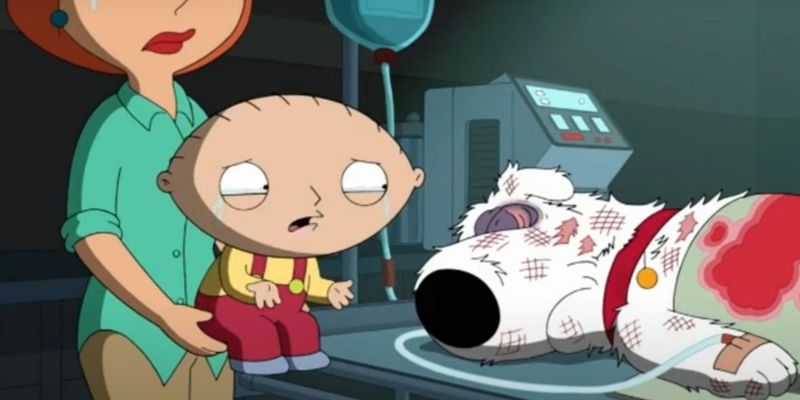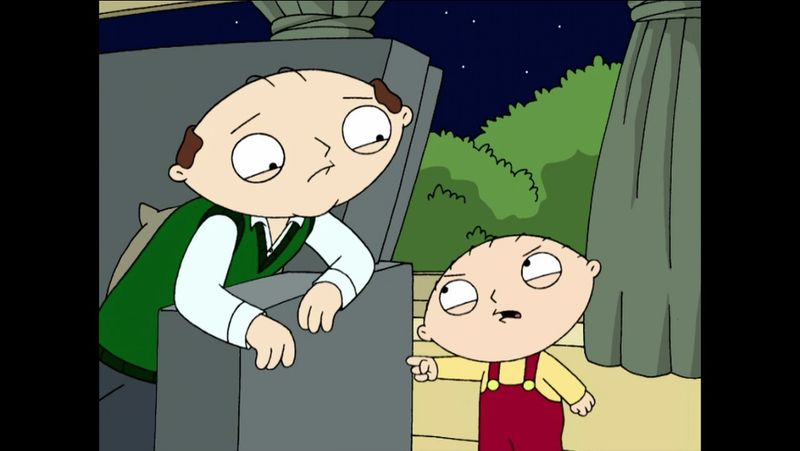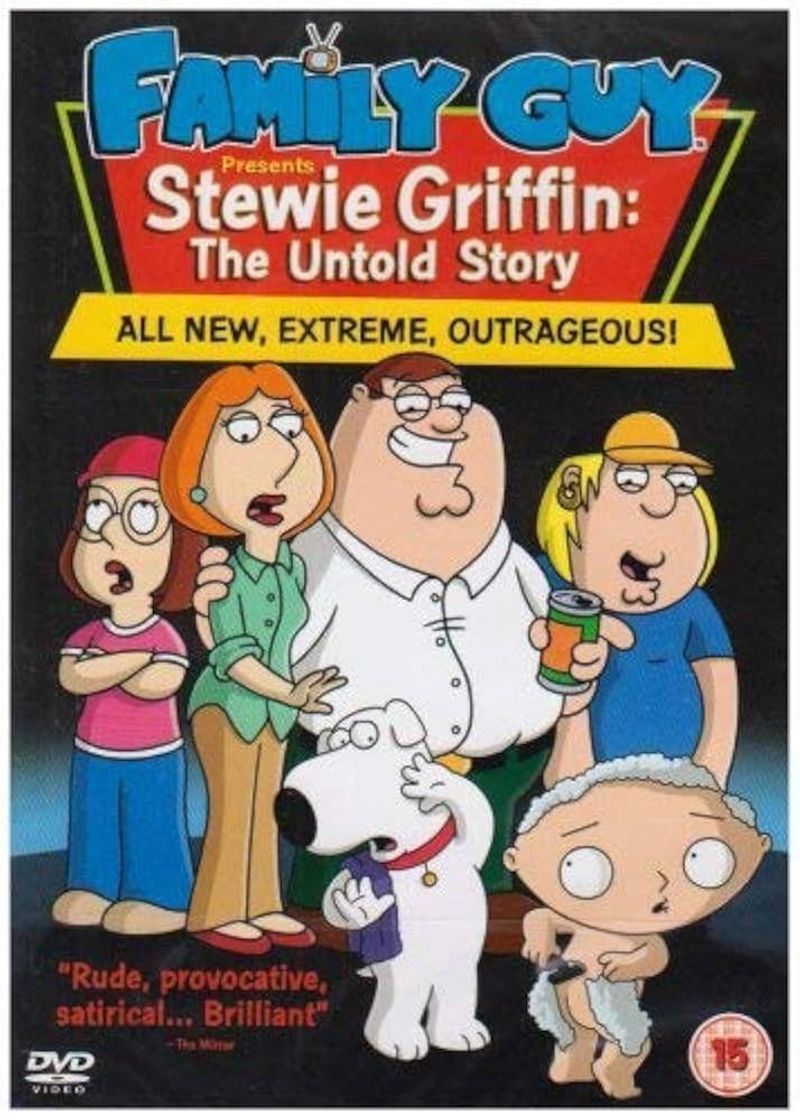Stewie Griffin stands as one of television’s most unforgettable characters, transforming from a simple baby villain into a complex, brilliant, and hilarious centerpiece of Family Guy.
His razor-sharp wit, elaborate schemes, and unexpected emotional depth have created some of the show’s most memorable moments.
From world domination plots to heartfelt adventures with Brian, Stewie has consistently delivered episodes that fans quote, rewatch, and celebrate years later.
Here are twenty episodes that showcase exactly why this diabolical infant became the heart of Family Guy’s legendary status.
1. Road to Rhode Island
Picture this: a baby and a talking dog stranded together on an unexpected cross-country adventure. This groundbreaking episode launched the beloved “Road to…” series, establishing the perfect chemistry between Stewie and Brian that would define Family Guy for decades.
What started as a simple trip to pick up Stewie from his grandparents turned into an epic bonding journey. The episode brilliantly balanced humor with genuine character development, showing audiences that beneath Stewie’s evil exterior lay a vulnerable child seeking connection.
Musical numbers, heartfelt conversations, and classic Family Guy chaos combined to create television gold. This episode proved that Stewie worked best when given room to grow beyond his one-dimensional villain role.
2. Stewie Kills Lois
After years of threatening his mother, Stewie finally appeared to succeed in his ultimate goal. This shocking two-part episode opener left fans stunned as they watched the baby genius seemingly accomplish his life’s mission with calculated precision.
The episode masterfully built tension while maintaining Family Guy’s signature humor. Stewie’s elaborate murder plot unfolded with surprising sophistication, showcasing his intelligence and determination in ways that felt both terrifying and oddly impressive.
What made this episode legendary wasn’t just the shocking premise, but how it subverted expectations. Fans who had grown accustomed to Stewie’s failed schemes suddenly witnessed him succeeding, creating genuine suspense about the show’s future direction.
3. Lois Kills Stewie
The thrilling conclusion to Stewie’s world domination arc delivered one of Family Guy’s most satisfying plot twists. After taking control of the world, Stewie faced unexpected consequences that even his brilliant mind couldn’t have anticipated.
Lois emerged as an unlikely action hero, proving that maternal instincts could overcome even the most elaborate evil schemes. The episode balanced intense action sequences with emotional moments that reminded viewers of the genuine love between mother and child.
The revelation that everything was merely a computer simulation provided the perfect reset button while maintaining the episode’s impact. This clever writing allowed the show to explore extreme scenarios without permanent consequences, establishing a formula that would serve future episodes well.
4. Road to Europe
Stewie’s obsession with a British children’s show host led to another unforgettable adventure with Brian. This European escapade elevated the “Road to…” formula with elaborate musical numbers and stunning animation that transported viewers across the continent.
The episode showcased Stewie’s sophisticated cultural knowledge while maintaining his childlike wonder. His excitement about meeting his television idol created genuine emotional stakes that made audiences invest in his journey’s success.
Musical sequences featuring different European locations demonstrated Family Guy’s ambitious storytelling capabilities. The combination of travel adventure, character growth, and spectacular production values created an episode that felt more like a feature film than a television show.
5. Road to Rupert
Sometimes the smallest losses create the biggest adventures. When Stewie’s beloved teddy bear Rupert disappeared, audiences witnessed the baby’s most vulnerable and determined side as he embarked on an emotional rescue mission.
This episode perfectly captured childhood’s intense attachments to comfort objects. Stewie’s desperate search for Rupert revealed layers of emotional depth that transformed him from a cartoon villain into a relatable character experiencing genuine loss.
The adventure took unexpected turns while maintaining focus on Stewie’s emotional journey. His relationship with Rupert represented innocence and security, making the quest feel genuinely important rather than merely comedic. The episode proved that Family Guy could create meaningful stories from the simplest premises.
6. Road to the Multiverse
Prepare for a mind-bending journey through infinite realities. This creative masterpiece showcased Family Guy’s animation team at their absolute peak, presenting multiple art styles and universes that left viewers amazed by the show’s versatility and imagination.
Each alternate universe offered unique visual treats and storytelling possibilities. From Disney-style animation to Japanese anime, the episode demonstrated remarkable artistic range while maintaining coherent character development throughout the interdimensional adventure.
Stewie’s invention of the multiverse device provided the perfect vehicle for exploring “what if” scenarios. The episode balanced spectacular visuals with genuine character moments, creating an experience that satisfied both casual viewers and devoted fans seeking deeper Family Guy lore.
7. Brian & Stewie
Locked in a bank vault overnight, Brian and Stewie delivered Family Guy’s most intimate and emotionally raw episode. This bottle episode stripped away external distractions, focusing entirely on the complex relationship between the intellectual dog and genius baby.
Conversations ranged from philosophical discussions to deeply personal confessions. The episode explored themes of mortality, purpose, and friendship with surprising maturity, proving that Family Guy could handle serious subject matter without losing its essential character.
Emmy recognition followed this bold experiment in character-driven storytelling. The episode’s willingness to slow down and examine its characters’ inner lives created a template for future dramatic moments while maintaining the show’s comedic foundation.
8. Road to the North Pole
Christmas took a dark turn when Stewie and Brian’s North Pole adventure revealed the holiday’s harsh realities. This episode brilliantly subverted Christmas special expectations, creating a haunting yet hilarious exploration of seasonal mythology.
The discovery of an overworked, dying Santa Claus provided both shocking imagery and genuine pathos. Stewie’s reaction to this revelation showed his capacity for empathy and problem-solving when faced with real consequences beyond his usual schemes.
Environmental themes and social commentary elevated this beyond typical holiday episodes. The bleak North Pole setting created an apocalyptic atmosphere that challenged viewers’ comfortable assumptions about Christmas while maintaining hope through Stewie and Brian’s determination to help.
9. Stewie Loves Lois
Maternal affection reached comedic extremes when Stewie’s hatred transformed into obsessive love for Lois. This role reversal created hilarious situations while exploring the complex psychology behind Stewie’s relationship with his mother.
The episode examined how quickly love and hate can interchange in family dynamics. Stewie’s overwhelming displays of affection became just as problematic as his previous murder attempts, creating fresh comedy from familiar character relationships.
Lois’s discomfort with Stewie’s sudden devotion provided perfect comedic tension. The episode demonstrated that even positive changes in Stewie’s behavior could create chaos, proving that his intensity was the real source of comedy rather than his specific goals or attitudes.
10. Back to the Pilot
Time travel allowed Brian and Stewie to revisit Family Guy’s origins, creating a meta-commentary on the show’s evolution. This ambitious episode examined how small changes could alter entire timelines while celebrating the series’ history.
Returning to the pilot episode provided fascinating glimpses of character development over time. Stewie’s interaction with his earlier self highlighted his growth from simple villain to complex character, while Brian confronted his own changes throughout the series.
The episode cleverly addressed continuity issues while creating new comedic possibilities. By acknowledging the show’s inconsistencies and evolution, the writers turned potential problems into storytelling opportunities, demonstrating Family Guy’s self-aware approach to its own mythology.
11. Patriot Games
Boxing legend Mike Tyson faced an unexpected opponent when Stewie stepped into the ring. This absurd matchup created one of Family Guy’s most memorable sports moments, combining celebrity cameos with Stewie’s fearless determination.
The episode built tension through Stewie’s training montage and pre-fight preparation. His scientific approach to boxing strategy showcased his intelligence while his lack of physical intimidation created perfect comedic contrast against the heavyweight champion.
The actual fight delivered both laughs and surprising action. Stewie’s unconventional tactics and unwavering confidence made the impossible matchup feel genuinely entertaining, proving that the right character dynamics could make any scenario work within Family Guy’s universe.
12. Chick Cancer
Romance bloomed unexpectedly when Stewie experienced his first serious relationship and marriage. This emotional rollercoaster showcased the baby’s capacity for genuine love while maintaining the show’s comedic sensibilities throughout his romantic journey.
The whirlwind courtship revealed Stewie’s sophisticated understanding of adult relationships. His approach to romance combined childlike enthusiasm with mature emotional intelligence, creating a unique perspective on love that only his character could provide.
Heartbreak followed happiness as the relationship faced realistic challenges. The episode’s emotional depth surprised viewers accustomed to Stewie’s more superficial pursuits, proving that Family Guy could handle genuine sentiment without sacrificing its comedic identity or character consistency.
13. The Tan Aquatic with Steve Zissou
Vanity reached dangerous levels when Stewie’s tanning obsession spiraled into serious health concerns. This episode tackled beauty standards and self-image issues through the lens of a baby’s extreme dedication to achieving the perfect tan.
Stewie’s methodical approach to tanning showcased his tendency toward obsessive behavior. His research and preparation demonstrated intelligence applied to increasingly ridiculous goals, creating comedy from the contrast between his capabilities and his priorities.
Health scares added genuine stakes to the superficial pursuit. The episode balanced humor with real consequences, showing how Stewie’s intensity could lead to dangerous situations while maintaining the comedic tone that made his character endearing rather than concerning.
14. Send in Stewie, Please
Therapy sessions revealed Stewie’s inner workings in unprecedented detail. This introspective episode stripped away external action, focusing entirely on psychological exploration through professional analysis of the baby genius’s complex mind.
The therapist’s questions prompted deep self-reflection from Stewie. His responses revealed layers of motivation, fear, and desire that had been hinted at throughout the series but never fully explored in such a direct, therapeutic context.
Animation techniques enhanced the psychological atmosphere. Visual metaphors and dream sequences illustrated Stewie’s mental state while maintaining Family Guy’s distinctive style, creating an episode that felt both familiar and completely unique within the show’s catalog.
15. The Hand That Rocks the Wheelchair
Scientific experimentation went wrong when Stewie created an evil clone of himself. This episode explored themes of identity and morality through the lens of a baby genius confronting his own darker impulses made manifest.
The clone represented Stewie’s worst tendencies amplified and unchecked. Watching the original Stewie react to his evil duplicate provided insight into his character growth and moral development throughout the series’ progression.
Chaos ensued as the clone’s actions threatened everything Stewie valued. The episode demonstrated how far the character had evolved from his early villainous roots by showing his horror at witnessing his former self’s unchecked evil in action.
16. Life of Brian
Grief struck the Griffin household when Brian’s unexpected death forced Stewie to confront loss in its most painful form. This emotionally devastating episode showcased the deep bond between the baby and dog while exploring themes of mortality and friendship.
Stewie’s reaction to Brian’s death revealed the full depth of their relationship. His desperate attempts to cope with the loss demonstrated emotional maturity and genuine love that transcended their typical comedic dynamic.
Fan reactions to the episode were immediate and intense. The genuine sadness and sense of loss felt by viewers proved how effectively Family Guy had developed these characters’ relationship, making Brian’s death feel like a real loss rather than a simple plot device.
17. Family Guy Viewer Mail #1
British stardom beckoned when Stewie became a child entertainment sensation across the pond. This anthology segment showcased the baby’s natural charisma and performance abilities while exploring themes of fame and cultural identity.
The British setting allowed Stewie’s accent and cultural knowledge to shine. His success in the entertainment industry felt natural given his intelligence and sophisticated vocabulary, creating a believable alternate reality for the character.
Celebrity culture satire emerged through Stewie’s experiences with fame. The episode examined how success could change relationships and personal priorities, using Stewie’s unique perspective to comment on entertainment industry dynamics and childhood stardom’s potential consequences.
18. The Untold Story – Part 1
Future revelations began when Stewie encountered his adult self, launching an epic three-part saga that would reshape everything fans thought they knew about the baby genius and his ultimate destiny.
Time travel complications created multiple timeline possibilities. The episode’s ambitious scope required careful plotting to maintain coherence while delivering the shocking revelations that fans had been anticipating throughout the series’ development.
Personal discoveries about Stewie’s future challenged his present-day assumptions. The encounter with his older self forced him to confront questions about identity, sexuality, and life goals that had been building throughout previous episodes, setting up major character development opportunities.
19. The Untold Story – Part 2
Shocking revelations continued as Stewie’s future unfolded in unexpected directions. The middle chapter of this epic trilogy deepened the mystery while providing answers that raised even more questions about the baby’s true nature and destiny.
Character relationships evolved as future consequences became clear. The episode explored how present-day actions could influence long-term outcomes, using Stewie’s situation to examine themes of fate, choice, and personal responsibility.
Plot complications intensified as multiple timelines converged. The episode’s ambitious storytelling required careful attention to detail while maintaining the emotional core that made viewers care about Stewie’s ultimate fate and the implications for his relationships with family members.
20. The Untold Story – Part 3
Epic conclusions arrived as Stewie’s three-part saga reached its climactic finale. This ambitious trilogy’s final chapter delivered answers to long-standing questions while establishing new directions for the character’s future development and growth.
Resolution came through unexpected means as timeline complications found their solution. The episode balanced satisfying conclusions with new possibilities, ensuring that the major revelations enhanced rather than limited future storytelling opportunities.
Character growth culminated in this transformative finale. Stewie’s journey through his own future forced him to confront fundamental questions about identity and purpose, creating lasting changes that would influence his character development in subsequent episodes and seasons.
